Video
Kid President - How to Change the World (a work in progress)

Document
Chapter K: Let Your Voice Be Heard: Synod on Cyberbullying
Students are challenged to write a speech as if they were a member of Pope Francis’ synod addressing the problem of cyberbullying.

Document
The Two Feet of Service and Justice
This chart provides students space to create examples of acts of charity and social justice for several real-life situations.

Document
Reflections on Poverty in America
This handout provides a series of Scripture passages and real-life accounts to help students reflect on poverty in America.

Document
Married Couple Interview
This handout provides the outline for an interview of a married couple.

Document
Dear Millie and Mike
This handout provides several real-life situations that teens might encounter. Students are challenged to respond to the situations and give advice to other teens.

Document
The Roles of Men and Women on TV: True to Life or Not?
This handout provides questions for students to answer as they observe the roles of men and women on TV.
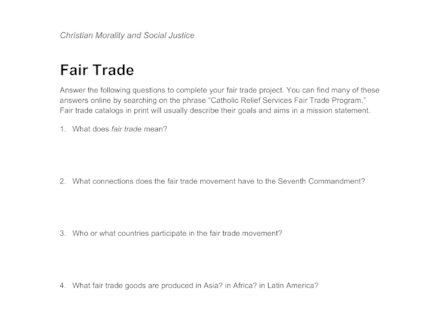
Document
Fair Trade
This worksheet provides questions for students to answer as they research and learn about the Fair Trade Movement.
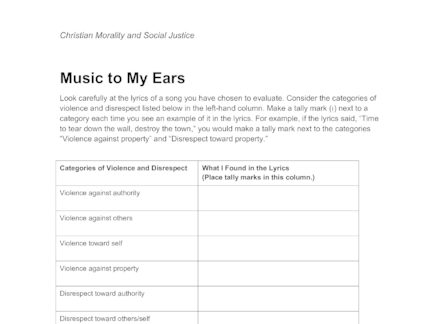
Document
Music to My Ears
Students evaluate a contemporary piece of music based on several different categories of violence and disrespect.
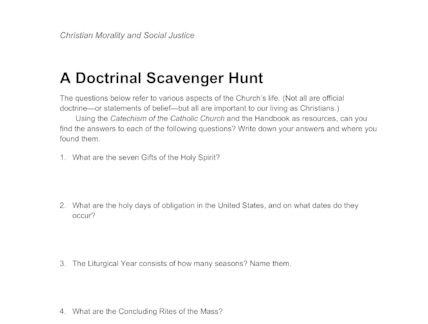
Document
A Doctrinal Scavenger Hunt
A scavenger hunt to find important Church doctrines, teachings and beliefs in the Catechism.

Document
The Transfiguration of Jesus
This worksheet helps students to read Scripture passages, answer questions about, and understand the importance of the Transfiguration of Jesus.

Document
Beatitudes Strips
A list of the Beatitudes organized to be cut into strips for a class activity.
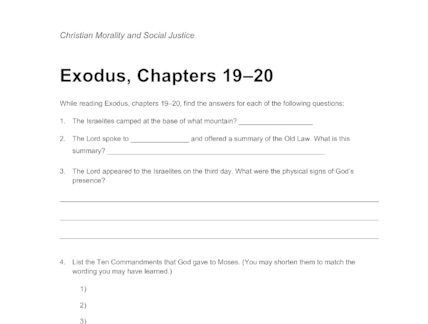
Document
Exodus, Chapters 19–20
This handout provides a note-taking guide while reading chapters 19-20 from Exodus.
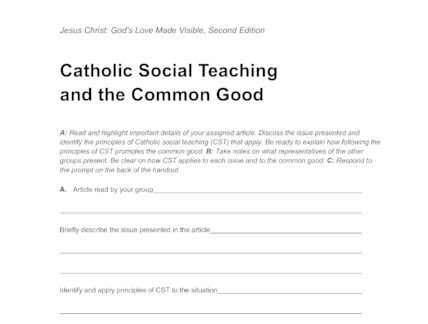
Document
Catholic Social Teaching and the Common Good
This worksheet helps students to take notes as they read articles and make connections to the principles of Catholic Social Teaching.

Document
What Can a Person Do?
This article gives several suggestions of how an individual can bring about distributive justice.

Document
The Plight of the Worlds' Children
This handout provides several statistics and pieces of information about the alarming needs of children in our world.
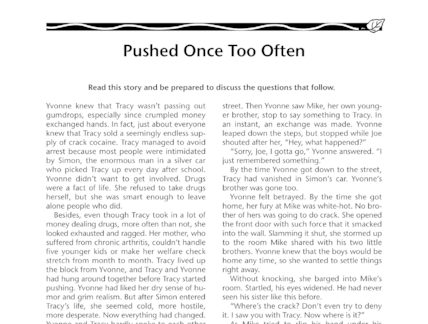
Document
Pushed Once Too Often
This handout presents a story about drug pushing in a school community. Students are challenged to reflect on several questions regarding the situation.
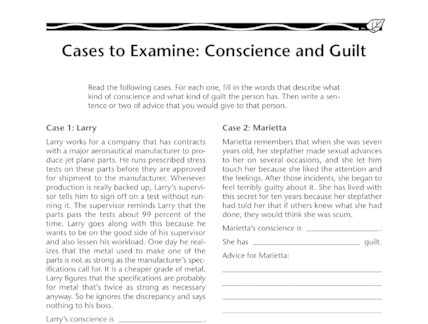
Document
Cases to Examine: Conscience and Guilt
Read the following cases. For each one, fill in the words that describe what kind of conscience and what kind of guilt the person has. Then write a sentence or two of advice that you would give to that person.
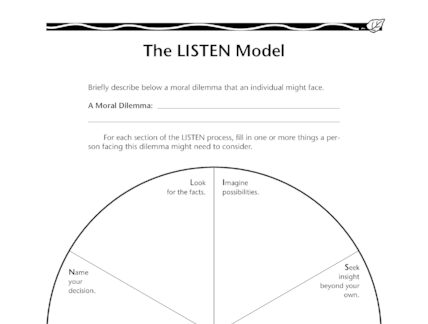
Document
The LISTEN Model
Briefly describe below a moral dilemma that an individual might face. For each section of the LISTEN process, fill in one or more things a person facing this dilemma might need to consider.
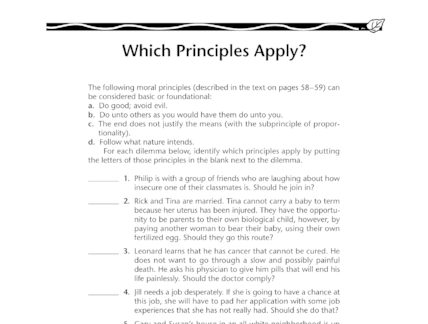
Document
Which Principles Apply?
he following moral principles (described in the text on pages 58–59) can be considered basic or foundational: a. Do good; avoid evil. b. Do unto others as you would have them do unto you. c. The end does not justify …
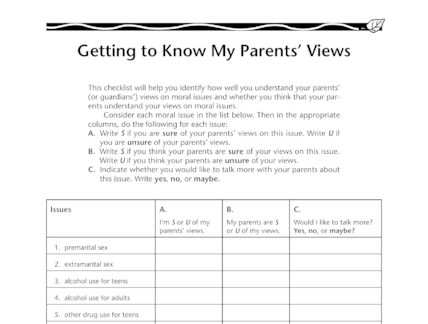
Document
Getting to Know My Parents' Views
This checklist will help you identify how well you understand your parents’ (or guardians’) views on moral issues and whether you think that your parents understand your views on moral issues.
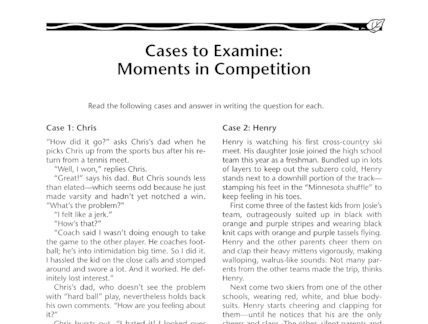
Document
Cases to Examine: Moments in Competition
Read the following cases of competition and answer in writing the question for each.

Document
Peace: A Guide to Win-Win Conflict Resolution
The PEACE process is a way to approach a conflict so that the outcome is a win- win situation, one that ensures that the good of both parties is considered and given priority. PEACE stands for problem and purpose, empathy, …

Document
Peace: Exploring Terms
In the first blank column, express your own sense of what it means to live out the following traits. In the second blank column, explain what you think the culture teaches you it means to live out each trait. Leave …





